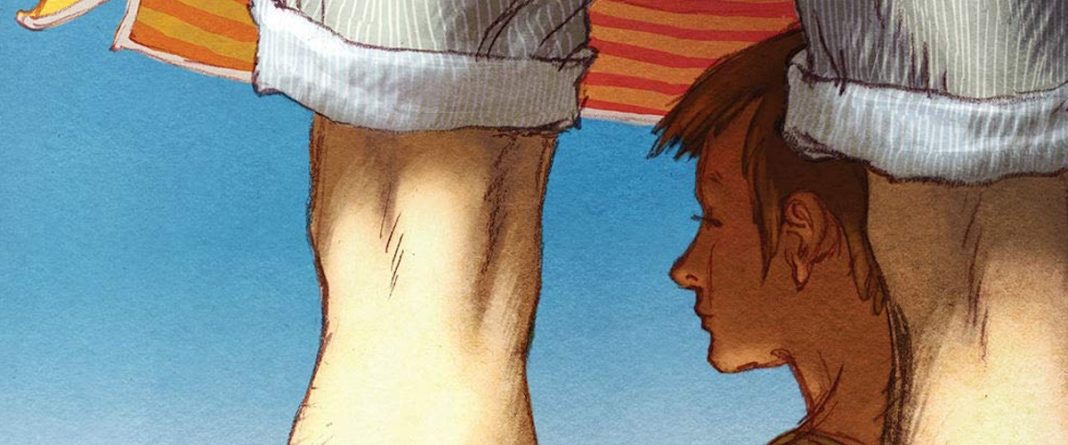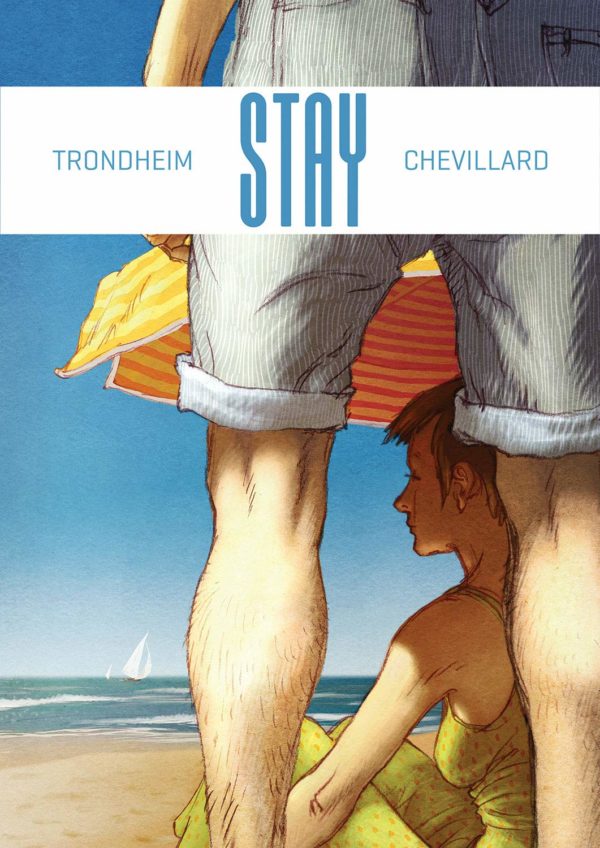Expelling My Truth
By Tom Van Deusen
Kilgore Books
This collection of three short stories by Tom Van Deusen gets its title from a directive shouted by Van Deusen in the first story. He’s at an art opening that features a performative work of a guy checking his social media as visitors in the gallery watch him. An altercation with the gallery person over the inherent lameness of such art leads Van Deusen to proclaim that instead of nestling messages in eye-rolling displays of confusing contemporary art, you should just come out and say what you mean. Expel it.
And so he does in these three stories headlined “Autobiographical Comic Strip,” which also features an awkward encounter with a lady and her infant on a bus, an encounter with Eddie Vedder, and a visit to meet the son of the CEO of his day job.
Titling these “Autobiographical Comic Strip” gives Van Deusen the chance to do exactly what you expect. He’s lampooning the autobiographical comics form by making up incidents and inserting himself in a self-deprecating way, which gives him a chance to expel his truth.
Most autobiographical comics do some expelling, often in the service of examining the life of the author, sometimes in a “what the hell happened” kind of way. I wouldn’t say there’s a lot of examining going on, but avoidance, but that’s where a lot of the humor comes from. The final story, with the CEO, features the expelling in its purest form as Van Deusen tackles the reality of being a cartoonist as weighed against the societal standard of what constitutes success.
What matters here though aren’t the insights so much as the delivery, without which the insights would be as impactful as if they had been delivered by a guy checking his social media in an art gallery. Van Deusen has a gift for the deadpan and skill with punchlines, which he’s able to deliver through the time-honored autobiographical method of depicting low-key conversations. He also inserts some good, awkward, embarrassing moments into these. Thankfully, you won’t have had to read many autobiographical comics to get laughs out of Van Deusen’s work. They do that pretty well on their own but a familiarity will certainly enhance some of your snickers.
Stay
Written by Lewis Trondheim
Illustrated by Hubert Chevillard
Lion Forge
[Disclaimer: Lion Forge is a sister company of Syndicated Comics, which publishes The Beat.]
Everyone has periods in their life when they wish for quick change. They’d do anything for a sudden sweep. I’d submit, though, that the times in life that does happen are marked by a period of time — could be a moment, could be much longer — when we have no clue what to do with the opportunity because we didn’t expect it. Stay is kind of about that. It’s mostly about breathing though.
A couple arrive for a vacation at a crowded beach town when a freak accident kills the man, leaving the woman, Fabienne, to decide what to do with herself in response. How will she handle her grief? She stays on vacation.
Fabienne quietly stalks the streets and beaches, wanders through the diversions and the nightlife, but not without joy. More as if she’s letting life wash on her. As randomly as the death of her companion Fabienne meets an older guy Paco, with whom she develops a friendship with a flirtacious quality that never seems like it’s heading further than that.
Paco turns out to be just the voice Fabienne needs. Never too intrusive, always respectful but with the ability to let a probing question ease into the atmosphere comfortably, Paco provides just the company for a person who needs solitude.
This quiet little aside should be depressing, considering it’s at least partially about mourning, but it’s more contemplative than anything else. Fabienne’s wanderings are mostly silent and Hubert Chevillard is masterful at depicting the crowds as a group of individuals who command your attention, as well as the landscape itself, which becomes a character in the silence. Alongside the scenes with Trondheim’s gentle dialogue, Stay becomes a book about a big journey taking place in a small space, the human heart, and the skill and care with which it is realized allows the reader to immerse themselves in Fabienne’s path, but also gives them the space for their own contemplative moments.









